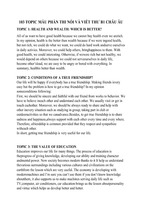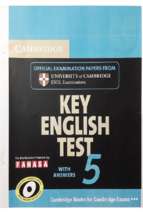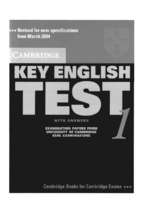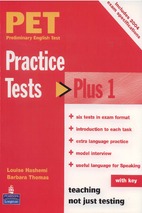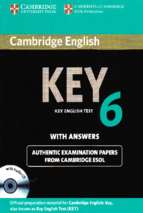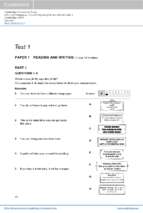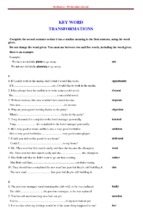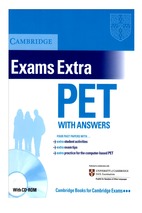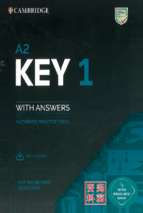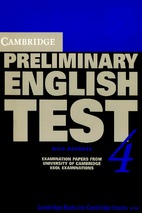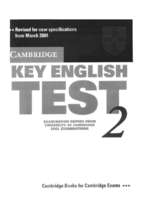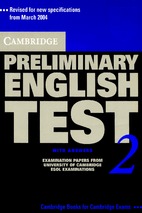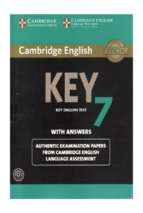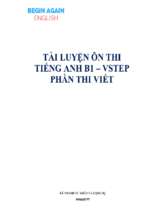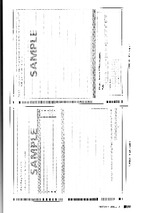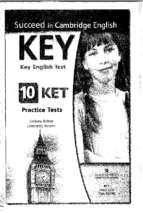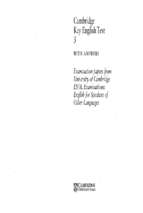VIETNAM NATIONAL UNIVERSITY, HANOI
UNIVERSITY OF LANGUAGES AND INTERNATIONAL STUDIES
FACULTY OF POST - GRADUATE STUDIES
****************
TRẦN THỊ THÙY DUNG
APPLICATION OF COOPERATIVE LEARNING STRATEGIES TO IMPROVE
SPEAKING SKILLS FOR NON-ENGLISH MAJOR STUDENTS IN A POLICE
TRAINING INSTITUTION IN VIETNAM
(Áp dụng chiến thuật học hợp tác nhằm cải thiện kỹ năng nói cho sinh viên không chuyên
tiếng Anh tại một cơ sở giáo dục thuộc ngành công an tại Việt Nam)
M.A. MINOR THESIS
Field
: English Teaching Methodology
Code
: 8140231.01
Hanoi - 2020
VIETNAM NATIONAL UNIVERSITY, HANOI
UNIVERSITY OF LANGUAGES AND INTERNATIONAL STUDIES
FACULTY OF POST- GRADUATE STUDIES
****************
TRẦN THỊ THÙY DUNG
APPLICATION OF COOPERATIVE LEARNING STRATEGIES TO IMPROVE
SPEAKING SKILLS FOR NON-ENGLISH MAJOR STUDENTS IN A POLICE
TRAINING INSTITUTION IN VIETNAM
(Áp dụng chiến thuật học hợp tác nhằm cải thiện kỹ năng nói cho sinh viên không chuyên
tiếng Anh tại một cơ sở giáo dục thuộc ngành công an tại Việt Nam)
M.A. MINOR THESIS
Field
: English Teaching Methodology
Code
: 8140231.01
Supervisor : Assoc. Prof. Dr. Lê Văn Canh
Hanoi - 2020
DECLARATION
I - Tran Thi Thuy Dung, hereby certify that the thesis entitled
“Application of cooperative learning strategies to improve speaking skills for
non-English major students in a police training institution in Vietnam” is the
result of my own work and effort. This thesis was carried out and submitted in
partial fulfillment for the Degree of Master of Arts at the Faculty of Postgraduate Studies, University of Languages and International Studies, Vietnam
National University of Hanoi. I also certify that my thesis has not been
submitted anywhere for any award. Where other sources of information have
been used, they have been acknowledged and documented in the Reference list.
i
ACKNOWLEDGMENTS
This graduation thesis could not have been accomplished without the
invaluable assistance, encouragement and support from the number of people
who all deserve my profound gratitude and appreciation.
First, I owe my deepest gratitude to my supervisor, Associate Professor
Doctor Lê Văn Canh for his valuable guidance and advice throughout every
stage of this study. His support has enabled me to develop an understanding of
the subject and contributed to the fulfillment of the study.
My sincere thanks also go to my colleagues at the Department of Foreign
Languages of the PPA, who helped me build up solid theoretical background
studies and research methods through their valuable lessons. I am especially
grateful for their important instructions and advice at the final stage of my research.
My sincerest thanks would also go to my dear friends in class
QH.2018.1E3 who assisted me with many useful ideas as well as encouraged me
greatly when I felt confused and all non-English major students in class N02D44 who were also very friendly and enthusiastic to help me conduct my
research successfully. With such encouragement, I would like to express my
thanks to all of them once.
Last but not least, I would like to express my profound thanks to my
family whose encouragement, support and love have strongly and consistently
motivated me to reach the thesis‟s completion.
ii
ABSTRACT
Speaking skill seems to be one of the most challenging productive skills
for most of the students in the People‟s Police Academy (PPA). Regarding to the
accomplishments of the Cooperative Learning (CL) program particularly done
by thousands of teachers all over the world, the researcher decided to implement
this approach in the context of teaching and learning English speaking skills for
students in her workplace. Therefore, the study was carried out with the aim of
examining how cooperative learning strategies work in improving non-English
major students' speaking skills at the PPA, together with discovering students‟
attitudes towards this approach and pointing out some difficulties which the
teacher met during the application. To be more specific, the research was
conducted in an action research form and lasted for 12 weeks. Then, a set of
questionnaires was delivered to students so that the data would be collected from
different viewpoints. Moreover, after the post-intervention questionnaire, some
semi-structured interviews were applied to get further information from some
students who had finished the questionnaire. The research questions were also
answered by interviews with the observing teacher and the teaching journal of
the researcher. The result shows that there are some considerable improvements
in the students‟ speaking skills quantitatively and qualitatively. Most of the
students show their concern and interest in the activities based on cooperative
learning structures. From the findings of this action research, some difficulties
have also been investigated to draw out some pedagogical implications for those
who are interested in applying CL to their teaching English speaking skills.
iii
TABLE OF CONTENTS
DECLARATION .................................................................................................. i
ACKNOWLEDGMENTS .................................................................................. ii
ABSTRACT ........................................................................................................ iii
TABLE OF CONTENTS ................................................................................... iv
LIST OF ABBREVIATIONS........................................................................... vii
LIST OF TABLES, CHARTS AND FIGURES ............................................ viii
CHAPTER 1: INTRODUCTION ...................................................................... 1
1.1. Rationale of the study .................................................................................. 1
1.2. Objectives of the study ................................................................................. 3
1.3. Research questions ....................................................................................... 3
1.4. Scope of the study ......................................................................................... 4
1.5. Methods of the study .................................................................................... 4
1.6. Significance of the study .............................................................................. 5
1.7. Organization of the thesis ............................................................................ 5
CHAPTER 2: LITERATURE REVIEW .......................................................... 7
2.1. Speaking skills .............................................................................................. 7
2.1.1. Nature of speaking ...................................................................................... 7
2.1.2. Speaking performance ................................................................................. 8
2.1.3. Teaching speaking in a classroom .............................................................. 9
2.2. Cooperative Learning (CL) ....................................................................... 11
2.2.1. Definitions of CL ...................................................................................... 11
2.2.2. Basic elements ........................................................................................... 12
2.2.3. Collaborative Learning and Cooperative Learning................................... 14
2.3. Cooperative Language Learning (CLL) .................................................. 16
2.3.1. Goals of CLL ............................................................................................. 16
2.3.2. Benefits of CLL ......................................................................................... 16
2.3.3. A model of CLL ........................................................................................ 17
2.3.4. Differences between CLL and traditional methods .................................. 20
2.3.5. Group formation ........................................................................................ 22
iv
2.4. Cooperative Language Learning strategies ............................................. 23
2.4.1. Language learning strategies ..................................................................... 23
2.4.2. Cooperative Learning strategies ................................................................ 25
2.4.3. Cooperative Language Learning activities ............................................... 26
2.5. Previous studies .......................................................................................... 29
2.6. Summary of the chapter ............................................................................ 34
CHAPTER 3: RESEARCH METHODOLOGY ........................................... 35
3.1. The context of the study ............................................................................. 35
3.1.1. The context of learning and teaching English in the police training
institution ............................................................................................................. 35
3.1.2. Materials .................................................................................................... 35
3.1.3. Participants ................................................................................................ 36
3.2. The research design.................................................................................... 36
3.2.1. Reasons for choosing an action research design ....................................... 36
3.2.2. The procedure of the action research ........................................................ 37
3.3. Instruments of data collection ................................................................... 41
3.3.1. Survey questionnaires ............................................................................... 41
3.3.2. Semi-structured interviews........................................................................ 43
3.3.3. Teaching journal ........................................................................................ 44
3.4. Data collection procedure .......................................................................... 45
3.5. Data analysis procedure ............................................................................ 45
3.5.1. Pre-intervention questionnaire and post-intervention questionnaire ........ 45
3.5.2. Semi-structured interviews........................................................................ 46
3.5.3. While-intervention teaching journal ......................................................... 47
3.6. Summary of the chapter ............................................................................ 47
CHAPTER 4: FINDINGS AND DISCUSSION ............................................. 48
4.1. Findings ....................................................................................................... 48
4.1.1. Pre-intervention ......................................................................................... 48
4.1.2. Intervention and Post-intervention ............................................................ 52
4.2. Discussion of findings ................................................................................. 65
4.2.1. Students‟ attitudes towards the implementation of CL in English speaking
lessons ................................................................................................................. 65
v
4.2.2. The effectiveness of CL to students‟ speaking skills ................................ 67
4.2.3. Difficulties of the teacher when implementing CL activities ................... 69
4.3. Summary of the chapter ............................................................................ 70
CHAPTER 5: CONCLUSION ......................................................................... 71
5.1. Conclusion ................................................................................................... 71
5.2. Pedagogical implications for better CL application ............................... 72
5.2.1. For teachers ............................................................................................... 72
5.2.2. For students ............................................................................................... 73
5.3. Limitations of the study ............................................................................. 74
5.4. Suggestions for further research .............................................................. 74
REFERENCES .................................................................................................. 76
APPENDICES ...................................................................................................... I
APPENDIX 1 ........................................................................................................ I
APPENDIX 2 ..................................................................................................... III
APPENDIX 3 ..................................................................................................... VI
APPENDIX 4 ....................................................................................................VII
APPENDIX 5 .................................................................................................. VIII
APPENDIX 6 ...................................................................................................... X
APPENDIX 7 .................................................................................................. XIV
APPENDIX 8 ................................................................................................... XX
APPENDIX 9 ............................................................................................... XXIV
APPENDIX 10 ............................................................................................. XXVI
vi
LIST OF ABBREVIATIONS
Cooperative Learning
: CL
Cooperative Language Learning
: CLL
English as a Foreign Language
: EFL
People‟s Police Academy
: PPA
vii
LIST OF TABLES, CHARTS AND FIGURES
TABLES
Page
Table 1
Comparisons between Traditional approach and CLL
Table 2
Instruments for data collection
41
Table 3
The meaning of mean score
42
Table 4
Results of section 1 in the pre-intervention questionnaire
44
Table 5
Results of section 2 in the pre-intervention questionnaire
46
Table 6
Results of section 3 in the pre-intervention questionnaire
47
Table 7
Results of section 1 in the post-intervention questionnaire
49
Table 8
Students‟ preferences for CL activities
51
Table 9
Results of section 3A in the post-intervention questionnaire
53
Table 10 Results of section 3B in the post-intervention questionnaire
54
Table 11 Results of section 4 in the post-intervention questionnaire
56
CHARTS
19-20
Page
Chart 1
Bar chart on students‟ preferences on types of CL activities
51
Chart 2
Pie chart on students‟ preferences in group forming in CL activities
52
Chart 3
Pie chart on students‟ preferences in group division in CL activities
52
FIGURES
Page
Figure 1
Stages in speaking lessons (Adapted from Harmer,2007)
10
Figure 2
Cyclical action research model (Kemmis and McTaggart, 1998
34
viii
CHAPTER 1: INTRODUCTION
In this part, the problem and the rationale for the study, together with the
aims, objectives, and scope of the whole paper are clearly stated and explained.
Above all, this part also builds the research questions to work as clear guidelines
for the whole research.
1.1. Rationale of the study
Nowadays, we cannot deny the role of English in many fields including
technology, economy, business, entertainment, and education. English is regarded as
one of the most popular languages as it helps people communicate and interact with
others even from the far-flung corners of the world. Vietnam once decided to step
into the globalization process, introduced English as a second language to be taught
in many schools from the very early days of the innovation era.
Learning English as a second or foreign language has received a lot of
attention because there are a lot of difficulties in countries where English is not
their first language. EFL learners face a lot of difficulties in speaking English
(Rababa‟h, 2005; Zang, 2009) which results from many factors like the learners
themselves, the teaching strategies, the curriculum or inadequate strategies or
methods to study. Therefore, teachers should always look for useful strategies to
reduce the difficulties of teaching the English language (Long, 1969; Chen,
2007; Nunn, 2011) and they have to find some well-planned and organized ways
to facilitate the process of learning and teaching.
Right from the early days of establishment, the People„s Police Academy
has recognized the importance of teaching and learning foreign languages.
Foreign languages, especially English have been an indispensable subject in the
training curriculum of the academy. At the People‟s Police Academy, full-time
students are required to learn 3-4 semesters of English from Elementary to PreIntermediate level (equivalent from A2 to B1 level of CEFR framework). They
have to pass the exam and get a certificate of English B1 competence as a
1
graduation requirement. Due to the necessity of foreign language competence, it
is very essential for them to focus on studying English for their own career later.
There are 155 full-time students of the course D44 studying English as a
foreign language. Speaking, one of the productive skills seems to be challenging
for most of the students in the PPA in general and students from D44 in
particular. To students of the PPA, there are more difficulties due to the typical
features of the academy when they have little motivation to study. The researcher
has realized the problems of learning English in the PPA since becoming a
teacher of English in 2015 when she was annoyed with the atmosphere of
“silence” in speaking lessons. Although the students were always encouraged to
speak, their participation was not achieved as expected and they showed unequal
work when doing tasks together. In other words, there was no equal opportunity
for students to participate actively in the classroom such as there were some
students eagerly volunteered to answer and often dominated discussions, while
others just listened, observed, and daydreamed while their classmates hold forth.
As a result, the assessment is not adequate enough and the teacher cannot
motivate all the students. The second problem is that English competence and
communicative skills varied differently among students. In fact, in high school,
they focus primarily on grammar and they do not have many chances to use
practical English. Some students had a limitation in mastering vocabulary, also
had difficulty pronouncing English words, did not feel confident to speak
English in front of the class or public places and were not accustomed to
working together with their partners or peers in studying English. The last one is
they were also still dependent learners-they need teacher‟s help anytime. She
kept on finding the methods to get all her students equally join in the speaking
activities with the hope of improving their speaking skills in terms of
vocabulary, grammar, fluency, etc. During the process of researching, she had
found some books about implementing Cooperative Learning strategies to
improve language learners‟ cooperation, participation and proficiency. She
2
realized that many cooperative learning programs have been carried out
worldwide and likewise Vietnam. With regards to the successes of CL programs
in improving students‟ learning in general and speaking skills in particular, there
appears to be an urgent need to create a cooperative learning environment to
enhance students‟ speaking skills and attitudes in which the teacher work as the
facilitator and motivate creativity and cooperation among students. Therefore,
taking all the above into account, the researcher would like to conduct an action
research project on the field of learning speaking skills in her teaching context
and choose the title for the graduation paper as: “Application of cooperative
learning strategies to improve speaking skills for non-English major students
in a police training institution in Vietnam” with the hope of successfully
applying these strategies in achieving English speaking skill in particular and
acquisition of English in general.
1.2. Objectives of the study
The thesis is conducted with the aim of examining how cooperative
learning strategies work in improving non-English major students' speaking
skills at the PPA, including discovering both students‟ attitudes towards the
method, and difficulties which the teacher coped when using cooperative
learning strategies at the PPA. With these research incentives in mind, the
researcher formulated the objectives as follows: i) to find out whether the
application of CL is able to improve students‟ speaking skills or not; ii) to
investigate students‟ attitudes towards CL; and iii) to discover the difficulties the
teacher encountered when implementing CL activities in speaking lessons.
1.3. Research questions
In order to fulfill the purpose aforementioned, this paper is carried out to
seek answers to the following questions:
Question 1: What are students‟ attitudes towards the implementation of
CL in English speaking lessons?
3
Question 2: To what extent does the use of cooperative learning
strategies affect English speaking skills of students at the PPA?
Question 3: What are the difficulties of the teacher when using
cooperative learning strategies in English speaking lessons?
It should be noticed that all these above research questions aimed at
defining and solving the problems only in my research context.
1.4. Scope of the study
Because of the limited knowledge and time from the researcher, this
thesis cannot cover all fields of CL and all the students as well. Therefore, the
researcher just focuses on some cooperative learning activities which can help
students to get the highest benefits in their learning. Besides, it is intended to
explore the students‟ attitudes towards CL, not teachers‟ attitudes.
Moreover, a worthwhile thing to consider in this part is generalizability.
Because it is a kind of action research conducted in a very specific educational
context and a limited number of participants - a class of only one university in
Hanoi, one police institution in Vietnam. This means that there is no
generalization of findings can be made, or if yes, it has been made with caution
with the same educational situations.
The researcher also takes charge of the class from the beginning of the
semester in the school year of 2018-2019. All the learning activities were
designed to follow cooperative learning strategies, the curriculum, and the
content of the book as well.
1.5. Methods of the study
The research approach that the author employed is action research,
following the procedures guided by steps in the action research cycle by
Kemmis and McTaggart (1988).
This study was carried out in form of an action research with both
quantitative and qualitative methods, by these following data collection
4
instruments: Questionnaires; Semi-structured interviews (with students and one
observing teacher); and Teaching journal.
To ensure the reliability of the research, a combination of more than one
data collection instrument was applied. To be more specific, two sets of
questionnaires were delivered to 38 students before and after the intervention and
semi-structured interviews with students and one observing teacher so that the
data would be collected from different viewpoints on attitudes and effectiveness
of CL. Moreover, some difficulties when applying CL into speaking lessons were
also revealed through an interview with an observing teacher and teaching journal
which the researcher took note during the intervention.
1.6. Significance of the study
The study is conducted with the hope of improving the speaking skills of
students, the teaching of English speaking skills and to serve as a useful source
of reference for the colleagues at the PPA. The results of this study are intended
to provide readers with useful information. In particular, this study is hoped to
show evidence that the use of cooperative learning can enhance students‟
speaking skills. Therefore, the study would better inform the teachers in order to
achieve a closer look in the situation of using CL in teaching speaking skills and
gain the highest attendance of students by a student-centered approach to
teaching such productive skills.
1.7. Organization of the thesis
The thesis is divided into 5 chapters:
Chapter 1: Introduction - gives the rationale, the objectives, the research
questions, the scope, the methods, and organization of the study.
Chapter 2: Literature review - provides the background of the study, including
definitions of key concepts, and discussions of related studies.
Chapter 3: Research methodology - describes the participants and instruments of
the study, as well as the procedure employed to carry out the research.
5
Chapter 4: Findings and discussion - presents, analyzes, and discusses the
findings that the researcher found out from the data collected according to the
research questions.
Chapter 5: Conclusion - summarizes the main issues discussed in the paper, the
limitations of the research, several suggestions for cooperative learning
adaptation, and further studies. Following this part is the Appendices.
6
CHAPTER 2: LITERATURE REVIEW
This chapter is devoted to the literature review, especially to the key concepts
and related studies to the research topic. At first, this chapter proposes a review
of the literature related to speaking skills and cooperative learning. In the
meantime, the writer tries to focus on the definitions and characteristics of the
key terms in the scope of the study based on many related studies and researches
around the world in general and in Vietnam in particular with a view to
illustrating the concepts more clearly.
2.1. Speaking skills
In real life situations, speaking is considered as one of the most
challenging skill to achieve. In fact, the ability to speak is the language of
speech. It is just about putting ideas in language to get others to understand the
meaning. The word “speaking” in this study refers to one of four language-and
learning-related competencies.
There are many definitions of speaking according to experts and
researchers. Speaking is a productive language skill (Siahaan, 2008:95). It
means that speaking is a person‟s skill to produce sounds that exists at the
meaning and be understood by other people, so that able to create of good
communication. Moreover, speaking is the direct use of language and means by
which people communicate (Fulcher, 2003).
According to Bailey (2000:25), speaking is perceived as a process of
interaction where speakers intend to build meaning through producing, receiving
and processing information. It is also agreed that speaking is a skill to use a
language approximately to express ideas, opinions or feelings in order to give or
get information and knowledge from other people who do communication.
2.1.1. Nature of speaking
As mentioned above, speaking is one of the four language skills learned.
In the process of learning English, four basic skills are often integrated with
7
each other. For example, when teachers speak, students listen and then, write to
take notes or read materials and respond to teachers by speaking. Through
speaking, students will express their thoughts, views, and their emotions in
expression to the listeners. When students want to speak, they have to focus on
what is spoken and acknowledge the participation in the complement of
knowledge in certain language components, such as vocabulary, grammar,
pronunciation, and fluency.
The majority of language learners around the world study English to
improve their speaking skills because of the roles of the discussion including
sharing ideas and views, planning, bargaining, overcoming a specific problem,
creating and developing interpersonal connections and partnerships, or other
occupational reasons and it seems natural to say that the ability to speak plays a
major role in this overall competence.
2.1.2. Speaking performance
In this study, the term “performance” here means students‟ practice and
their ability to perform speaking skills, not the underlying knowledge of
speaking. Gower, Phillips, and Walters (2005) state the two main aspects of the
speaking skill including accuracy and fluency. It is agreed that accuracy
involves the correct use of vocabulary, grammar, and pronunciation. Burkart
(1998) asserts that speaking is an activity that involves the areas of knowledge,
namely pronunciation, grammar, and vocabulary. It is the use of the right words
in the right order with the right pronunciation.
Clark and Clark (1997) suggest that in certain systems specifying
meaning of units and of sentences, a speaker expresses his thought and feeling in
verbs, phrases, and sentences. Students are encouraged to try and use the
linguistic materials they learned to communicate accurately with controlled and
guided activities.
In terms of fluency, fluency in Richard and Plat's research (1993) refers to
the levels of communication skills that (a) the ability to produce written and/ or
spoken language with ease; (b) the ability to speak with good but not necessarily
8
perfect command of intonation, vocabulary, and grammar; (c) the ability to
produce continuous speech without causing comprehension difficulties or a
breakdown of communication.
In summary, it can be concluded that speaking is the ability to express
something which involves utilizing words in correct order and pronunciation,
right grammatical form, and meaningful context (fluency) and making a good
choice of words (vocabulary) in the process of interpreting and negotiating
meaning in conveying messages to establish and maintain social relationships.
In addition, the responsibility of teachers is providing activities that involve
interaction among learners. O‟Malley and Pierce (1996) propose that different
kinds of speaking activities are appropriate at different levels of proficiency.
Therefore teachers should give practice at all levels so that learners can express
and produce spontaneous language. In terms of fluency and accuracy, Byrne
(1984) also states that oral fluency, the ability to express reasonably, accurately,
and without hesitation, should be the primary goal in teaching the productive
skill of speaking.
2.1.3. Teaching speaking in a classroom
A basic model for teaching productive skills was given by Harmer (2007).
He points out that teacher‟s management role is a key element to success in
classroom tasks in speaking lessons.
The procedures for speaking class include the following activities as
described in Figure 1. Firstly, in the lead-in stage, teachers have to involve and
make students aware of the topic based on students‟ background knowledge or
concerning certain contexts. In presenting the task stage, teachers should give
clear instructions about what they expect from the students. Once students have
started, the teachers need to monitor the task, go around to observe and give
support if necessary. This intervention does not necessarily involve the
correction of mistakes, but rather to ensure students‟ progress according to the
objectives of the lesson. When students finish, feedback is given by teachers and
9
members of the class. Finally, teachers could move on from the task with
follow-up activities to reinforce the activities in the lesson.
Figure 1. The stages in a Speaking Class (Adapted from Harmer, 2007)
Lead-in
Set the
tasks
Observe
Give
feedback
Followup
2.1.4. Assessing speaking
Speech can be broken down into pronunciation and intonation, accuracy,
and fluency, or it can be categorized in terms of strategies, or it can be regarded
as a form of interaction and analyzed using the methods of pragmatics or
discourse analysis. The problem is that in the course of a normal conversation,
all of these aspects are important. If testers try to separate the strands, they may
well find that the ecology of speaking is different in different successful
speakers. This means that the accurate speaker may communicate effectively,
but slowly, whereas the fluent speaker may sacrifice accuracy for the sake of
rapid communication (Skehan, 1998).
Testing of speaking skills is a method to measure students‟ strengths and
weaknesses in their oral skills. From the results of testing, teachers know about
the situation of their students‟ speaking skills, and teaching technique is also
designed based on each specific level of students. In this thesis, the researcher
used the result of the final test in module 1 (the module before the intervention) to
have an overall background information on students‟ level, in order to choose and
design suitable speaking activities which follows Cooperative Learning approach.
10
- Xem thêm -


